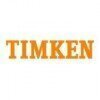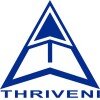Line Engineer
20+ Line Engineer Interview Questions and Answers

Asked in HOLITECH INDIA

Q. If there is a problem with the test, how will you verify it?
To verify a problem with the test, I would follow a systematic approach.
Review the test procedure and documentation to ensure it was followed correctly
Check the test equipment and instruments for any malfunctions or inaccuracies
Repeat the test using a different sample or control to compare results
Consult with colleagues or experts for their insights and opinions
Perform additional tests or experiments to gather more data and evidence

Asked in Bajaj Auto

Q. Clutch used for engage and disengage the power transmission
Clutch is used to engage and disengage power transmission between the engine and transmission.
Clutch is a mechanical device that connects and disconnects the engine from the transmission.
It is used to engage and disengage the power transmission between the engine and transmission.
Clutch is operated by a pedal in manual transmission vehicles and by a computer in automatic transmission vehicles.
Clutch plates are the main components of a clutch system.
Examples of clutches includ...read more
Line Engineer Interview Questions and Answers for Freshers

Asked in HOLITECH INDIA

Q. If one machine has a UPH of 300, but we need 400 UPH from the same machine with the same manpower, how would you achieve this?
Increase machine output from 300 to 400 UPH by optimizing processes and enhancing efficiency.
Analyze current workflow to identify bottlenecks and inefficiencies.
Implement lean manufacturing principles to streamline operations.
Train operators on best practices to maximize machine utilization.
Schedule regular maintenance to reduce downtime and ensure optimal performance.
Consider minor adjustments to machine settings for improved output.

Asked in Timken

Q. Can you explain the process of troubleshooting and describe the common issues that can occur with equipment?
Troubleshooting involves systematic identification and resolution of equipment issues to ensure optimal performance.
Identify the problem: Gather information on symptoms and error messages.
Check power supply: Ensure equipment is plugged in and receiving power.
Inspect connections: Look for loose or damaged cables and connectors.
Run diagnostics: Use built-in tools or software to identify faults.
Review logs: Analyze error logs for patterns or recurring issues.
Test components: Iso...read more

Asked in Bajaj Auto

Q. What is the difference between two-stroke and four-stroke engines?
Two stroke engines complete a power cycle in one revolution of the crankshaft while four stroke engines complete it in two revolutions.
Two stroke engines have a simpler design and are lighter than four stroke engines.
Two stroke engines have a higher power-to-weight ratio than four stroke engines.
Four stroke engines are more fuel efficient than two stroke engines.
Four stroke engines have a longer lifespan than two stroke engines.
Examples of two stroke engines include chainsaws...read more

Asked in Timken

Q. What is Poka-Yoke, and what are the different types of Poka-Yoke?
Poka-Yoke is a Japanese term meaning 'mistake-proofing' to prevent errors in manufacturing processes.
Types of Poka-Yoke include: 1) Prevention: Designing processes to eliminate errors (e.g., color-coded parts).
2) Detection: Identifying errors as they occur (e.g., alarms for incorrect assembly).
3) Correction: Allowing easy correction of errors (e.g., guides for proper alignment).
Example: A car assembly line using fixtures that only allow parts to fit in one orientation.
Line Engineer Jobs




Asked in Timken

Q. What is your understanding of yield rate, and what types of defects are there in your processes?
Yield rate measures the percentage of products meeting quality standards, while defects can vary in type and impact.
Yield rate is calculated as (Number of Good Units Produced / Total Units Produced) x 100%.
Common defects include: functional defects (e.g., a circuit not working), cosmetic defects (e.g., scratches on a product), and performance defects (e.g., slower than expected processing speed).
In manufacturing, a high yield rate indicates efficient processes, while a low yi...read more
Asked in Aisan Fiem Automotives India

Q. What do you know about MOSFET , tell me npn and PNP and about transistors and many many more
MOSFET is a type of transistor used for amplifying or switching electronic signals.
MOSFET stands for Metal-Oxide-Semiconductor Field-Effect Transistor.
It is a type of field-effect transistor that is commonly used in electronic devices.
MOSFETs come in two main types: N-channel (NPN) and P-channel (PNP).
NPN MOSFETs have a positive voltage applied to the gate to allow current flow, while PNP MOSFETs have a negative voltage applied to the gate.
MOSFETs are used in a wide range of ...read more
Share interview questions and help millions of jobseekers 🌟


Asked in IndiGrid

Q. What major tests and procedures are required when a conductor snaps?
Proper tension and pressure are required to prevent conductor snapping.
Tension must be maintained within the allowable range for the conductor.
Proper sagging of the conductor must be ensured.
The conductor must be free from any defects or damages.
The temperature of the conductor must be monitored to prevent overheating.
The conductor must be properly supported and secured.
The pressure on the conductor must be evenly distributed.
Proper insulation must be provided to prevent any ...read more

Asked in Thriveni Earthmovers

Q. What is a differential?
Differential is a mechanical device that splits torque between two wheels, allowing them to rotate at different speeds.
Differential is commonly used in vehicles to enable smooth turning by allowing the outer wheel to rotate faster than the inner wheel.
It consists of a set of gears that distribute torque from the engine to the wheels.
The differential allows power to be transmitted to both wheels while accommodating differences in rotational speed.
It is essential for maintainin...read more

Asked in Timken

Q. What is hardening, and how do we implement it?
Hardening is the process of securing a system by reducing its vulnerabilities and increasing its resistance to attacks.
Implementing security measures such as firewalls, antivirus software, and intrusion detection systems
Regularly updating software and patches to fix known vulnerabilities
Enforcing strong password policies and implementing multi-factor authentication
Restricting access to sensitive data and resources based on user roles and permissions

Asked in Tata Motors

Q. What is a four-stroke engine?
The four stock engine refers to a type of engine with four cylinders arranged in a straight line.
Four stock engine is also known as an inline-four engine.
It is a common engine configuration used in many vehicles, providing a good balance of power and efficiency.
Examples of vehicles with four stock engines include the Honda Civic, Toyota Corolla, and BMW 3 Series.

Asked in Timken

Q. What is carburizing? how do we do it?
Carburizing is a heat treatment process used to increase the carbon content on the surface of a metal object.
Carburizing involves heating the metal in a carbon-rich environment, such as carbon monoxide or methane gas.
The carbon atoms diffuse into the surface of the metal, creating a hardened layer with increased wear resistance.
Common methods of carburizing include gas carburizing, pack carburizing, and liquid carburizing.
Examples of carburized parts include gears, camshafts,...read more
Asked in Kumoh Ems India

Q. How do you lift heavy materials?
Use proper lifting techniques, seek assistance if needed, and use mechanical aids if available.
Bend your knees and keep your back straight when lifting heavy objects
Use your legs to lift, not your back
Ask for help from a coworker if the object is too heavy to lift alone
Use equipment such as a forklift or dolly to move heavy materials

Asked in Bajaj Auto

Q. What is an engine?
An engine is a machine that converts fuel into mechanical energy to power a vehicle or device.
Engines come in various types such as internal combustion engines, steam engines, and electric motors.
They are used in cars, airplanes, boats, trains, and many other machines.
Engines work by burning fuel to create heat, which is then converted into mechanical energy to power the machine.
Efficiency, power output, and emissions are important factors to consider when designing and using...read more

Asked in Tata Motors

Q. What is a clutch?
A clutch is a mechanical device that engages and disengages power transmission between two rotating shafts.
Clutches are commonly used in vehicles to engage and disengage the engine from the transmission.
They can also be found in power tools, such as drills and saws.
Clutches work by using friction to connect and disconnect the rotating shafts.
There are several types of clutches, including manual, automatic, and semi-automatic.
Clutches can wear out over time and may need to be ...read more

Asked in IndiGrid

Q. How do you resolve Right of Way issues?
Right of way can be resolved through communication, signage, and following traffic laws.
Communicate with other drivers and pedestrians to establish who has the right of way
Use clear signage to indicate right of way, such as stop signs or yield signs
Follow traffic laws and regulations to ensure safe and efficient flow of traffic
In some cases, right of way may be determined by the type of vehicle or the direction of travel
Be aware of blind spots and always proceed with caution
Asked in Postiefs Technologies

Q. Explain linux booting process and file system
The Linux booting process involves several stages from BIOS to the kernel loading and file system mounting.
1. BIOS/UEFI: Initializes hardware and loads the bootloader from the boot device.
2. Bootloader (GRUB): Loads the Linux kernel into memory and passes control to it.
3. Kernel Initialization: The kernel initializes system resources and mounts the root file system.
4. Init Process: The first user-space program (usually 'init' or 'systemd') is started to manage system services...read more

Asked in SLMG Beverages

Q. Describe the lowing machine.
A lowing machine is a piece of equipment used to lower heavy objects or materials safely and efficiently.
Designed to handle heavy loads
Uses hydraulic or mechanical systems to control lowering speed
Commonly used in construction and manufacturing industries

Asked in SLMG Beverages

Q. Describe the plasmax machine.
Plasmax machine is a device used for plasma treatment of surfaces.
Utilizes plasma to clean, activate, or coat surfaces
Commonly used in industries like electronics, automotive, and medical
Can improve adhesion of coatings or adhesives on surfaces

Asked in SLMG Beverages

Q. Describe the filling machine.
A filling machine is a piece of equipment used to fill containers with a product, such as liquid or powder, in a precise and efficient manner.
Filling machines can be used for a variety of products, including beverages, food items, pharmaceuticals, and chemicals.
They typically consist of a hopper or reservoir for the product, a nozzle or valve for dispensing the product, and controls for adjusting fill levels.
Some filling machines use gravity to fill containers, while others u...read more

Asked in Bajaj Auto

Q. Capacitor working
Capacitors store and release electrical energy, acting like temporary batteries in electronic circuits.
Capacitors store energy in an electric field between two conductive plates
They can release stored energy quickly for short bursts of power
Capacitors are commonly used in filters, timing circuits, and energy storage applications

Asked in Accenture

Q. What is your favorite subject?
My favorite subject is mathematics because I enjoy solving complex problems and using logic to find solutions.
I enjoy working with numbers and equations
I like the challenge of solving mathematical puzzles
Mathematics is a universal language that can be applied to various fields

Asked in Synophic Systems

Q. Explain the OSI layers.
The OSI model is a conceptual framework used to understand network communication across different systems.
1. Physical Layer: Deals with the physical connection between devices (e.g., cables, switches).
2. Data Link Layer: Ensures reliable transmission of data frames (e.g., Ethernet).
3. Network Layer: Manages routing of data packets (e.g., IP addressing).
4. Transport Layer: Provides end-to-end communication and error recovery (e.g., TCP, UDP).
5. Session Layer: Manages sessions ...read more
Interview Questions of Similar Designations
Interview Experiences of Popular Companies








Reviews
Interviews
Salaries
Users

















